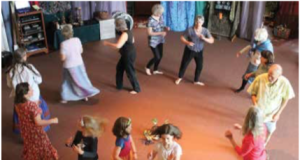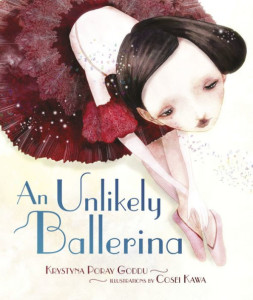Tag : dance
January 17, 2019 by Eleanor J. Bader
Dancing as Politics: Interview with Hadar Ahuvia
When Hadar Ahuvia took a World Dance class as an undergraduate at Sarah Lawrence College, she recognized that she could not properly investigate other cultures until she had a better understanding of her own. Her parents had been born and raised on the kibbutz Beit Hashita, and her grandparents had helped found the Israeli state, and so she began to untangle the roots of the Israeli folk dances she’d grown up with. She found Bedouin, Druze, Palestinian, Yemenite, and Mizrahi influences on those childhood dances, and began to use them to choreograph her own.
Ahuvia’s most recent piece, “Everything You Have is Yours?” explores her Israeli American identity and addresses cultural appropriation. What’s more, the dance, nominated for a 2018 Bessie Award for Outstanding Breakout Choreography, gives Ahuvia a platform to address her own conflicted relationship with a state she sees as an occupying presence.
Ahuvia now lives in Brooklyn, NY and sat down with Eleanor J. Bader in late November to discuss the challenges inherent in creating and performing dances that are simultaneously entertaining, provocative, and politically impactful.
- No Comments
September 26, 2018 by admin
Dance That Fuses Activism and Art
 Although I suspected I was lesbian in my teens, the idea was so frightening in those years that coming out seemed impossible. Like so many other hidden lesbians, I married and had two children. Against peer pressure, I returned to school where I became a teaching assistant. After 10 years, I earned a Ph.D. in literature and eventually became a professor. In time, I became a founder of women’s studies, lesbian studies, and Jewish women’s studies. When feminism made the word lesbian speakable, I came out, and thrived.
Although I suspected I was lesbian in my teens, the idea was so frightening in those years that coming out seemed impossible. Like so many other hidden lesbians, I married and had two children. Against peer pressure, I returned to school where I became a teaching assistant. After 10 years, I earned a Ph.D. in literature and eventually became a professor. In time, I became a founder of women’s studies, lesbian studies, and Jewish women’s studies. When feminism made the word lesbian speakable, I came out, and thrived.
The realization that many women’s studies students had histories of trauma in their lives led me to train as a therapist, a different kind of teacher, and after 13 years, I earned a Ph.D. in clinical psychology.
I came upon Sacred Circle Dance seemingly by chance, but from the first step, I felt I had come home; it was like the folk dancing of my youth, but more nourishing. The “sacred” in our dance is not religious, but related to wholeness and healing. The dances are moving meditations integrating mind, body and spirit, leading to harmony and balance.
I danced weekly, but soon went for longer trainings. I became so passionate that when one of our local teachers decided not to teach, I stepped in and never again stepped out. Sacred Circle Dance changed my path from feminist professor, to feminist therapist, to feminist teacher of dance. To support this practice I use all of my previous trainings. In the early years of feminism, there had been a sharp split between spirituality and politics.
But by the time I started to teach dance, I was in my late 60s, and no longer accepted false divisions, no longer worried about losing my feminist credentials. In this stage of my life, I would be my most authentic self.
- No Comments
August 15, 2018 by Yona Zeldis McDonough
The Book That Teaches Children About a Jewish Prima Ballerina

Young Lily Marks loves to stand on her tiptoes. When her parents notice there’s weakness in her legs, her doctor suggests dancing lessons to strengthen them, and Lily falls in love with ballet. But can this fragile girl ever become a serious dancer? When the famous ballerina Anna Pavlova comes to town, Lily just has to meet her. Maybe Pavlova—small, delicate, and Jewish like Lily—holds the key to Lily’s future. Fiction Editor (and lifelong balletomane) Yona Zeldis McDonough talks to author Krystyna Poray Goddu about her informative and charming new picture book.
- No Comments
 Please wait...
Please wait...